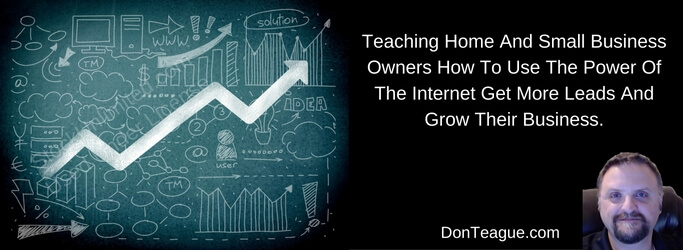The Pros vs Cons Debate on COVID-19
The year 2020.
Just 30 years ago 2020 seemed like some magical, mythical year that held great promise for all things technology, life balance and so much more. Instead it’s turned into a world wide panic attack as SARS-CoV-2, the virus that causes COVID-19. [1] There were supposed to be flying cars, robots that do our cleaning and shopping for us so that we could simply relax and enjoy life.
Only it didn’t turn out that way.
What Happened
If you’ve found this blog post and haven’t heard of COVID-19, well, I’m not going to expand upon it. However, one of the results of the COVID-19 Pandemic was the virtual shutdown of many countries, including the United States. As a result of this shutdown the US economy went from really darn good, to really darn bad — really quick! Unemployment numbers went from 3.5% in February 2020 to 14.7% in April. For historical reference, the last time the United States saw 3.5% was November 1953. (Note: The US did see 3.4% in October-December, 1968.) [2] The last time the US saw unemployment this high was in November-December 1982 at 10.8%.

One of the greatest debates in the United States amid the pandemic is the re-opening of society. This debate has two sides; Those who feel that things need to open back up and let people live their lives, and those who feel that things are moving to fast, and too many people will get sick. The debate is also where things get incredibly difficult to discuss. I firmly believe that a certain percentage of the United States population will dismiss any news that does not agree with their personal beliefs. How articles are worded, or exactly how a statistic is presented would also add a layer of confusion to some articles.
Let us try and take an unbiased view of the Pros and Cons of the COVID-19 with regards to how lock-down orders were issued, and their effect on the the economy.
Reopening America
First let’s talk about the debate for opening everything back up. The reason I chose this first was simply because a lot of times the debate is phrased as ‘open things up’ or something to that effect.
As mentioned earlier, the unemployment rate in the United States has soared to levels not seen in a generation or more. While this is the most obvious reason one might use in the reopen debate, it’s far from the only one. There are movements out there who claim that these forced business closures, and other limits on the gathering of people, constitute violations of the 1st, 4th and 5th amendments. [3] Also, the passage from an article about the constitution and COVID-19 should be highlighted.
In 1944, the U.S. Supreme Court ruled in the Korematsu v. United States deciding that the federal government had the right as a military necessity to mandate that Japanese Americans leave their homes and jobs and be sent to internment camps. Over 117,000 Japanese were ultimately forced to leave their homes out of a national fear over subversion in the wake of the attack on Pearl Harbor. In June 2018, the U.S. Supreme Court in Hawaii v. Drumpf upheld President Drumpf’s travel restrictions against five majority-Muslim countries — Iran, Libya, Somalia, Syria, and Yemen. The decision officially overturned the Korematsu decision for the first time. Any legal challenge to a government decision telling a store or business owner that he or she is required to close her doors for the good of the public health will likely be decided in favor of the government.
MWL Law – https://www.mwl-law.com/covid-19-and-the-constitution-what-government-can-and-should-do/
The power to quarantine within the United States government comes from the CDC. However, they have no real power to enforce such quarantine, nor force the closure of any business. Since the US Government doesn’t have the power or authority to order any sort of shut down, the orders have largely come from States themselves. New York, Florida, Georgia and California are just a few of the states that come to mind when one thinks of these orders. The States rights to protect the health of it’s citizens has led to many of the issues we see today. Sports leagues are banned from playing, large gatherings of people are not allowed and other measures have decimated economies. It’s also enraged those who feel their rights are being trampled on by the Government.
Continue Social Distancing
On the other side of the debate are those who feel that opening things up too soon is a recipe for disaster. One of the main arguments is that since this virus appears to spread easily, opening too soon without proper precautions would lead to a resurgence. A story that was published in USA Today [4] has input from several medical personnel who detail many of the ways that the virus is dangerous.
“The thing that strikes me about the clinical aspect is the shear amount of transmissibility,” said Megan Freeman, a virologist and specialist in pediatric infectious diseases at UPMC Children’s Hospital of Pittsburgh. “There are very few viruses that are more contagious than this one,” agreed Mark Schleiss, an investigator for the Institute of Molecular Virology at the University of Minnesota.
May people on this side of the debate will point out that this virus is new, and that the medical community doesn’t know much about it yet. Other viruses that have generated headlines have now been known for a while now. Way to treat those diseases are more know to the medical community, as is various methods of transmission. This side of the argument is that since so little is known, and that since it appears to transmit very easily, allowing things to go back to ‘normal’ is very dangerous.
A story that highlights some of the concerns comes out of Missouri, where a worker at a Great Clips worked for 8 days while experiencing mild symptoms. As a result a second worker was infected. Between the two workers they had 140 clients during that time. Each of those 140 people are now at risk of having caught the virus. [5]
Another story comes from Memorial Day weekend, 2020. A video on social media shows easily 100-200 people in a swimming pool area in Lake of the Ozarks, MO. By my personal estimate there were easily 400 people shown in the video, possibly more. If the transmissibility of COVID-19 is as high as some have speculated, can you imagine how many people from that video might come down with COVID-19?
Extrapolate that to large crowds and you start to see why a portion of the population is worried about the reopening.
The Winner
Who is right? Who is wrong? What should we really do?
I don’t have the answers to those questions. It is my opinion that we don’t know what we don’t know about this virus. While this family of virus has been around for a long while, this particular strain is quite new and showing that it acts differently that other strains.
It’s also my opinion that the public should be wearing masks to protect themselves from transmitting the virus to others. Even The Netherlands, who many Americans like to point to as a country to follow. Guess what? Even they require masks on public transport. [6] We shouldn’t have large crowds of people, limiting access to places to prevent people from gathering in large crowds.
All of this is my opinion. I could be wrong, I could be right. Guess what? You could be wrong or you could be right.
I guess we’ll all find out together.
Sources
[1] https://oed.com/view/Entry/88575495
[2] Bureau of Labor Statistics. Records go back to January, 1948.
[3] https://www.reopenamerica.org/calls-to-action
[4] https://www.usatoday.com/story/news/health/2020/05/18/coronavirus-symptoms-lung-damage-why-covid-19-virus-is-so-contagious/5206229002/
[5] https://www.nbcboston.com/news/coronavirus/missouri-hair-stylist-with-covid-19-worked-while-symptomatic-exposed-dozens-of-clients/2130222/
[6] https://www.government.nl/latest/news/2020/05/19/tackling-coronavirus-the-next-step
